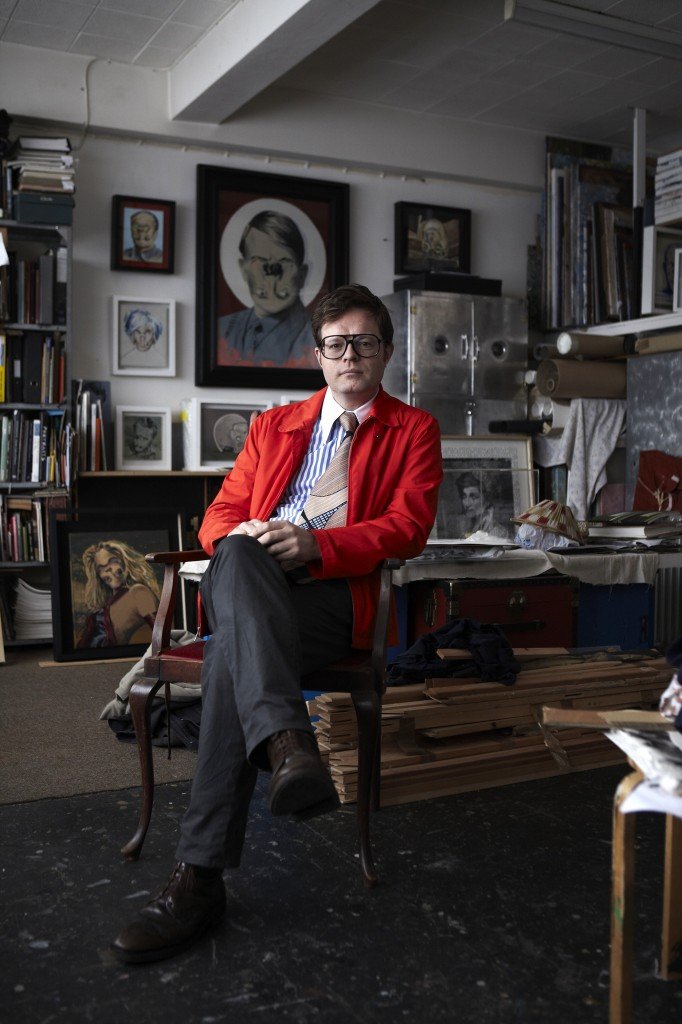Darren Coffield: The Artist as Curator, the Curator as Cultural Conjuror
In a cultural landscape that often confuses chaos for innovation and nostalgia for reverence, Darren Coffield stands apart: equal parts provocateur, preservationist, and portraitist of a fractured Britain. For over three decades, he has operated not just within the art world, but around it—circling its borders like a seasoned pickpocket, lifting icons and ideologies alike to examine their worth.
Coffield first emerged in the early 1990s, a Goldsmiths and Slade graduate whose brushstrokes were too nuanced to fully join the neon-lit circus of the Young British Artists. Instead, he helped build Factual Nonsense, a gallery and anti-establishment nerve center co-founded with Joshua Compston that ran on wit, wine, and wild intent. It was punk academia—equal parts manifesto and middle finger.
But Coffield’s practice has never been just about rebellion. His Paradox Portraits, a series of inverted celebrity faces, exposed the biases embedded in recognition itself. These works don’t just play with perception—they weaponize it. Viewers are confronted not just with distortion, but with the awkward realization of how quickly we assign identity, and how flimsy those identities are when flipped.
And now, in what may be his most ambitious conceptual gesture to date, Coffield has turned curator—not of a collection, but of a ghost. His resurrection of Soho’s fabled Colony Room Club isn’t just a restoration; it’s a revival of irreverence. A place once drenched in cigarette smoke and scandal, where Francis Bacon roared, George Melly mused, and Tracey Emin scribbled poetry on napkins, is now again a site of live art, live music, and deadpan chaos. Under Coffield’s direction, it’s no themed pop-up or sanitised homage. It’s the Colony reborn with teeth.
His role as artist-curator is more than hyphenated ambition—it’s a philosophy. In Coffield’s hands, curation is an act of storytelling as vivid as painting. He doesn’t hang art; he frames context. Whether orchestrating exhibitions that punch through political apathy or turning a derelict Soho staircase into a time machine, Coffield makes clear that the past isn’t sacred—it’s still in play.
So while the art world spins itself into biennial frenzy and algorithmic aesthetics, Darren Coffield remains a rogue constant. Unbothered by trends, unafraid of ghosts, and utterly unafraid to mix paint with provocation, he has shaped the art scene not by leading it, but by reminding it of its own potential for mischief, meaning, and madness.

